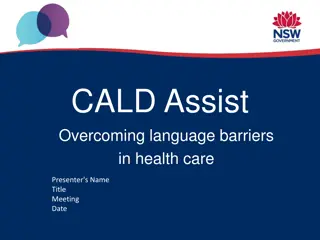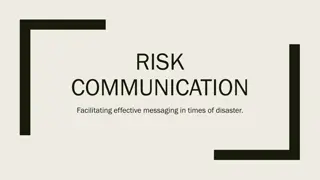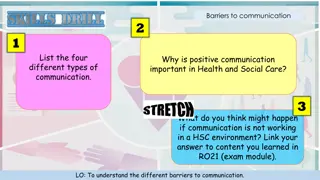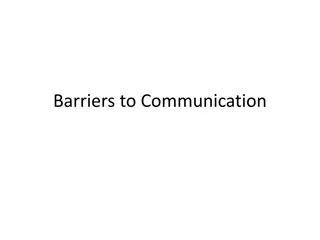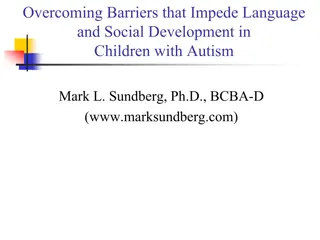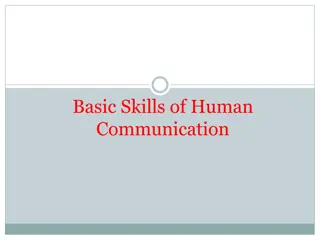Understanding and Overcoming Communication Barriers
Communication barriers such as semantic, language, socio-psychological, perceptual, emotional, interpersonal, physical, gender, and organizational can hinder effective communication. Strategies for overcoming these barriers include creating an open atmosphere, avoiding vocal cues, addressing people by their names, allowing others to speak, avoiding stereotypes, spending time, and being genuine.
Download Presentation

Please find below an Image/Link to download the presentation.
The content on the website is provided AS IS for your information and personal use only. It may not be sold, licensed, or shared on other websites without obtaining consent from the author. Download presentation by click this link. If you encounter any issues during the download, it is possible that the publisher has removed the file from their server.
E N D
Presentation Transcript
AECC Chapter 8 Effective Communication Barriers Solutions Techniques Alternatives (Revision)
What are barriers to communication: The ability to communicate not to be taken for granted A communication process is a collaborative process where sender and the receiver play a vital role.
Common Barriers to Communication Semantic Barrier Language Barrier Socio-Psychological Barrier Perceptual Barrier Emotional Barrier Interpersonal Barrier Physical Barrier Gender Barrier Organizational Barrier Sender-Oriented Barrier Reciever-Oriented Barrier
1. Semantic Barrier problems that surface due to misinterpretation of transmitted message. Words more than one meaning Jargon Difference in denotative (actual or literal meaning) and connotative ( abstract nouns and qualities) Unclarified assumptions Faulty translation Language Barrier expressions, buzz words Socio-psychological Barriers Strong emotion; selective perception; poor retention; status and fear inhibits employees Perceptual Barriers If each of us saw the world around us in the same way, there would be no need for communication. Emotional Barriers Fear, mistrust and suspicion 2. 3. 4. 5. 6. Interpersonal Barriers Six levels at which people distance themselves Withdrawl; Rituals; Pastimes; Working; Games; Closeness 7. Physical Barriers Closed office doors, separate cabins, poor outdated equipment; sound; noise 8. Gender barriers 9. Organizational Barriers Chain of command too long 10. Sender oriented and receiver oriented barriers
Some strategies for overcoming barriers Create an atmosphere for openness Avoid vocal cues Address people by their names Let others talk Do not stereotype Spend time Be genuine



